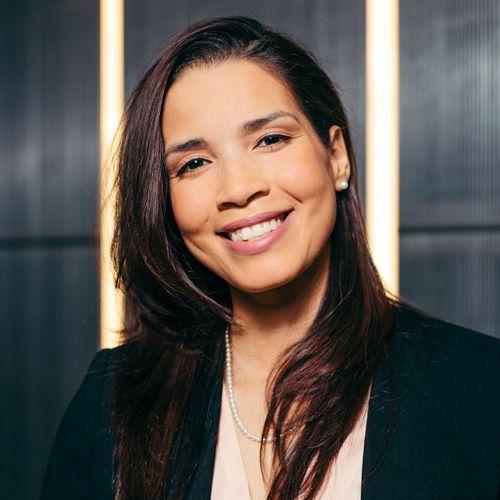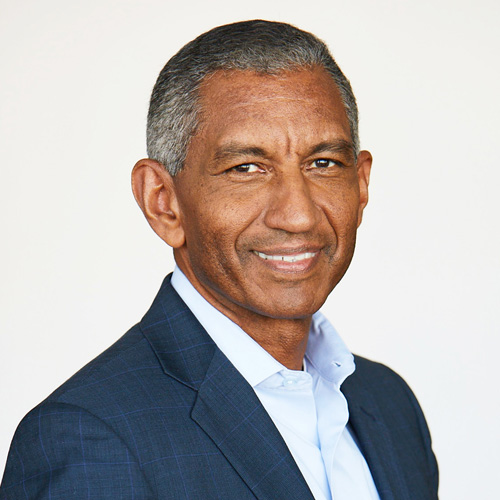Freddie Diaz’s technology career began immediately after he graduated college, at a time when personal computers were not-at-all common. In his role now, as vice president of global technology sourcing at Thomson Reuters, he operates in a rapidly-evolving space that has dramatically changed from the one he entered, one he couldn’t have imagined as a child.
“My interest in technology stemmed from how things worked—I had an insatiable curiosity. I was always trying to fix the TV, or the bicycle, or toaster—anything I could get my hands on.”
A leader in technology Sourcing, Diaz points out that the techniques and approaches in sourcing today are constantly advancing and changing. Because of this, there are more and more career paths available to becoming a technology expert. “A person could be overwhelmed by this,” he says, “but remember that there are many different skills that come into play.”
Diaz urges any professional to gain domain expertise and knowledgeof the category they want to manage, and the users with whom they wantto engage. “What helped me greatly in my sourcing career path was the working knowledge of technology,” he says. “In the early years of my sourcing career, I learned very quickly that it was easier to get acceptance and entrance into the technology groups, by understanding the work they did. Having the domain knowledge was key to gaining respect and inclusion.”
From 1979 to 2001, Diaz’s career path centered on technology. Then in 2001, he shifted his focus to sourcing. The Thomson Corporation at the time was creating a procurement team. The company planned to leverage its enterprise spend. “I went from technology manager with a medium-sized team to eventually heading up our corporate technology sourcing team within Thomson Corporate Global Sourcing,” Diaz says.
Because of globalization, Thomson Reuters has access to a multitude of resources for its worldwide operations. This is a major change from Diaz’s early days there and marks a change that greatly affects day-to-day operations.
“Additionally, the logistics of delivering products and services where they are needed anywhere in the world gets more complex with larger geographic footprints,” Diaz adds. “My department’s expertise has needed to expand more to address the global and regional requirements of our internal customers.”
Diaz says that the heightened move to the cloud across all industries is also something Thomson Reuters is engaged in. A large portion of computing as we know it today will eventually be delivered via the cloud. “The sourcing and contracting requirements needed for this shift is more advanced and complex, and yet we are making great progress in order to meet that challenge head-on,” he says.
In addition to keeping up in a rapidly changing field, sourcing comes with a wide array of challenges. “Identifying the best partners to deliver on our goals globally and rationalizing the footprint and numbers of existing partners takes time,” Diaz says. “The benefits are huge, yet the investment in time and effort can be intense.”
Today, the majority of Thomson Reuters spend in technology products is with a set number of partners. This is a system that works well for the technology and workflow solutions giant, which has been able to standardize its technology purchasing across the globe through the use of a select set of partners. “At one point, at the beginning of our sourcing journey, we had multiples of value-added resellers for purchasing network products,” Diaz says. “Today, there are a consolidated number of approved suppliers in this space, mainly due to our global footprint. Otherwise, it could still be less.”
Another area of focus is finding, retaining, and continuously training sourcing staff. Diaz calls it stimulating and says it is a rewarding part of an efficient, effective sourcing department. “The skill sets required of a sourcing person in this changing ecosystem need to be updated continuously,” he says.
Despite Thomson Reuters size, procurement is not more difficult because of the global scope of the company, Diaz says. Having success in a global sourcing organization means finding scalable and sustainable solutions that can be standardized across the world and with minimal changes.
“Additionally, given the global footprint, there are many times where a procurement solution needs to be modified to meet the unique set of requirements within a certain region.”
As an example, in some countries security requirements can affect Thomson Reuters ability to install networking devices. Other countries require that Thomson Reuters provide local technology delivery using suppliers with local addresses and entities, in order to avoid delays and performance issues. In other areas, including North America and the United States, there are no similar boundaries,
making it easy to standardize practices and suppliers. Outside of the United States, especially Europe and Asia, every country has a set of requirements, Diaz says. “Each one has to be addressed appropriately.”
When Thomson Reuters first decided to establish a sourcing function, the company didn’t have the expertise in-house to make it happen. The company either needed to hire new talent with backgrounds in purchasing, or help people in their technology divisions develop the needed skill sets in purchasing.
 “The best college program is one that would have a focus on the discipline of negotiating, reading and drafting agreements, and understanding the scope of your partnerships.”
“The best college program is one that would have a focus on the discipline of negotiating, reading and drafting agreements, and understanding the scope of your partnerships.”
—Freddie Diaz
“Before having a sourcing department, the people who were negotiating and purchasing technology products were those who used it or were in charge of the budgets,” Diaz explains. “Given that I was managing one of our technology areas and was practiced at negotiating and purchasing technology, I was a perfect fit.” Diaz joined the new team as it was created in 2001.
As the role of procurement specialists has changed, so have business schools’ attempts to train professionals who can focus on that career path. “Today, there are actually college programs that focus on a career in procurement,” Diaz says. “The best program is one that would have a focus on the discipline of negotiating, reading and drafting agreements, and understanding the scope and importance of supplier relationships. ” He urges people who want to enter procurement to first study these areas, because Diaz says trying to build a career without these skills is very difficult.
Looking forward, Diaz says the sourcing department has three main goals. The first is to continue to build strong partnerships with select suppliers for growth, leverage, and scale. The second is to focus on selecting the proper mix and numbers of partners needed to deliver the right products and services. Finally, a goal is to continuously improve delivery of services to internal customers. All of these steps will continue to improve a department and function that is rapidly changing, but maintains an unchanging standard of excellence.

